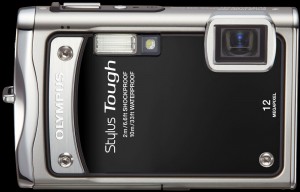Posted by Greg on
January 21, 2012
Welcome to the Q&A Page!
I’m happy to help answer your questions ranging from Greenland-style technique, making Greenland paddles, wing technique, Watertribe / ultra-distance kayak racing, kayak expeditions, kayak camping, surf kayaking and more.
I look forward to your questions! If you prefer for your question not to appear on my blog, please let me know and I’ll answer privately.
Please fill out the following form or email Greg.
cforms contact form by delicious:days
Q: How hard is it to paddle around with a camera in the cold? I’d love to do a shoot somewhere with the ice and water. Some of your pictures are amazing. — Donna.
A: Donna, Thanks for the complement. All of the kayaking images that I have taken in the last few years have been with the new breed of “waterproof/shockproof” point and shoot digital cameras. These cameras don’t offer quite the image sharpness and features of more “professional” cameras, but their strength is that you can grab them in an instant and capture images that would go missed with a much bulkier camera or a camera that must be retrieved from a dry box. Most of the images for my Sea Kayaker magazine articles were taken with a waterproof digital, so very good results are possible.
 I have used the Olympus Stylus series (e.g. Stylus 1030 SW) extensively, but lately I have been using a new Panasonic Lumix DMC-TS3. Both are great cameras. The Olympus has a sliding closure that covers the lens after you turn off the camera. I have a love-hate relationship with this feature. Usually it works great, and keeps the lens clean and dry, however if you do manage to get water behind it, it continues to smear water on the lens every-time you turn on the camera, even if you dry the lens. Read more... (612 words, 2 images, estimated 2:27 mins reading time)
I have used the Olympus Stylus series (e.g. Stylus 1030 SW) extensively, but lately I have been using a new Panasonic Lumix DMC-TS3. Both are great cameras. The Olympus has a sliding closure that covers the lens after you turn off the camera. I have a love-hate relationship with this feature. Usually it works great, and keeps the lens clean and dry, however if you do manage to get water behind it, it continues to smear water on the lens every-time you turn on the camera, even if you dry the lens. Read more... (612 words, 2 images, estimated 2:27 mins reading time)
Q: You have stated that the Greenland Paddle (GP) can act as a wing when the GP is used in a high wing type stroke. Have you done a test in your fast kayak, GP vs wing to determine advantages of one or the other with respect to efficiency and/or speed in non racing situations, eg., outings from 5 to 15 miles?
I have acquired both a wing (Onno) and a GP (Novorca) in the last year and have been learning both. At 4.2 kts, my traveling speed, the GP feels more efficient, but I can go at least 0.2 kts faster with the wing. Jerry
A: Jerry, Although I realize that you said non-racing situations, let me use that as an example, first, as it helps to clarify the issue.
To generalize, a racer is often trying to maximize speed over distance usually with an extremely light, unladen kayak. A sea kayaker is often trying the maximize the number of “miles per Snickers bars”, often with a heavy or gear-laden kayak, day after day. These are related, but are very different things and need to be viewed separately. Read more... (1200 words, 4 images, estimated 4:48 mins reading time)
Q: What would you suggest to someone who wants to unlearn unwinding before the catch and start to get good muscle memory for catch before unwinding.
Because the kayak is already moving I find myself unwinding – irresistibly! ;-( before catch. Apart from visualizing spearing a salmon, do you have other advice, tips, tricks, dry/ wet exercises etc to catch before unwinding?
A: When I do video analysis of students a common error is unwinding before the catch, or in other words, starting to apply power before the paddle is completely buried. This is a common power leak.
If you are “pulling” before the paddle is planted, not only is your stroke shortened (giving you less time to generate power), but the catch is often poor too (drawing air into the water — ventilation, and creating turbulence and making noise — “plop!”).
How short is a “model” stroke? For a wing you should be starting your exit when the blade reaches your knees and the blade should exit when your hand reaches your hip. Since the stroke is so short, you can’t afford to waste any of it. A Greenland paddle also exits when your hand is at your hip, but the blades are long, and will exit behind you. Read more... (655 words, 0 images, estimated 2:37 mins reading time)

